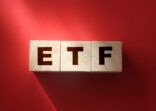Tracking error is a simple measure of quality of an exchange-traded fund. It is calculated based on daily differences of returns between the ETF and the underlying index. The lower the tracking error, the better the ETF follows the underlying index.
FSA took a look at around 350 ETFs with at least a three-year track record and registered for sale in Hong Kong and/or Singapore.
We found that commodity funds − both physical commodities and equity − tend to have high tracking errors. Physical palladium, platinum, silver and gold funds had tracking errors between 3 and 8, with the median of 3.85, while the median for equity ETFs was 0.34.
Bank ETFs had a median tracking error of 3.9 while the median for technology ETFs, including pharmaceuticals and biotechnology, was 3.4.
Broad equity ETFs, such as European equity, emerging markets or North America, had the lowest tracking errors, with the median 0.12 for emerging markets, 0.06 for Europe, and 0.02 for North America. Single country ETFs had higher tracking errors.
The tracking errors of fixed income ETFs were on average higher than those of equity funds, with a median of 0.84, but with a lower variance. The highest error we found was around 3, while some equity or commodity ETFs exceeded 8.
Median tracking error and annual fees of selected ETF sectors
| ETF Sector | Median Tracking Error | Median Annual Fee |
| Equity – Financials | 3.91 | 0.3 |
| Commodities | 3.89 | 0.35 |
| Equity – Technology | 3.4 | 0.3 |
| Equity – Greater China | 1.4 | 0.38 |
| Equity – Emerging Markets | 0.12 | 0.65 |
| Equity – Europe | 0.06 | 0.25 |
| Equity – North America | 0.02 | 0.3 |
Data: FE, 30 August 2017
What are the sources of tracking error and, by extension, ETF quality?
Management of an ETF involves trading securities to rebalance the portfolio as the composition of the index and the weighting of the securities in it changes. Trading fees are the major cause of the discrepancies in return. Timing discrepancies between the changes in the index and actual rebalancing of the portfolio are another.
Another cause is “sampling”, when an ETF invests only in a selection of securities from the index. This is common for large indices, especially fixed-income ones. Temporary uninvested cash holdings from dividend payments or new investments cause “cash drag” on the performance.
Fees and tracking error
FSA found earlier that active mutual funds charging high fees tend to deliver, on average, less alpha than those charging low fees.
It is interesting that ETF fees do not seem to correlate with tracking error.
While ETFs charging the lowest annual fees (below 0.2%) tend to have lower-than-average tracking errors, the most expensive ETFs, (charging more than 0.8%) also had relatively low tracking errors.
Most of those with high tracking errors fell in the middle range of fees.

















